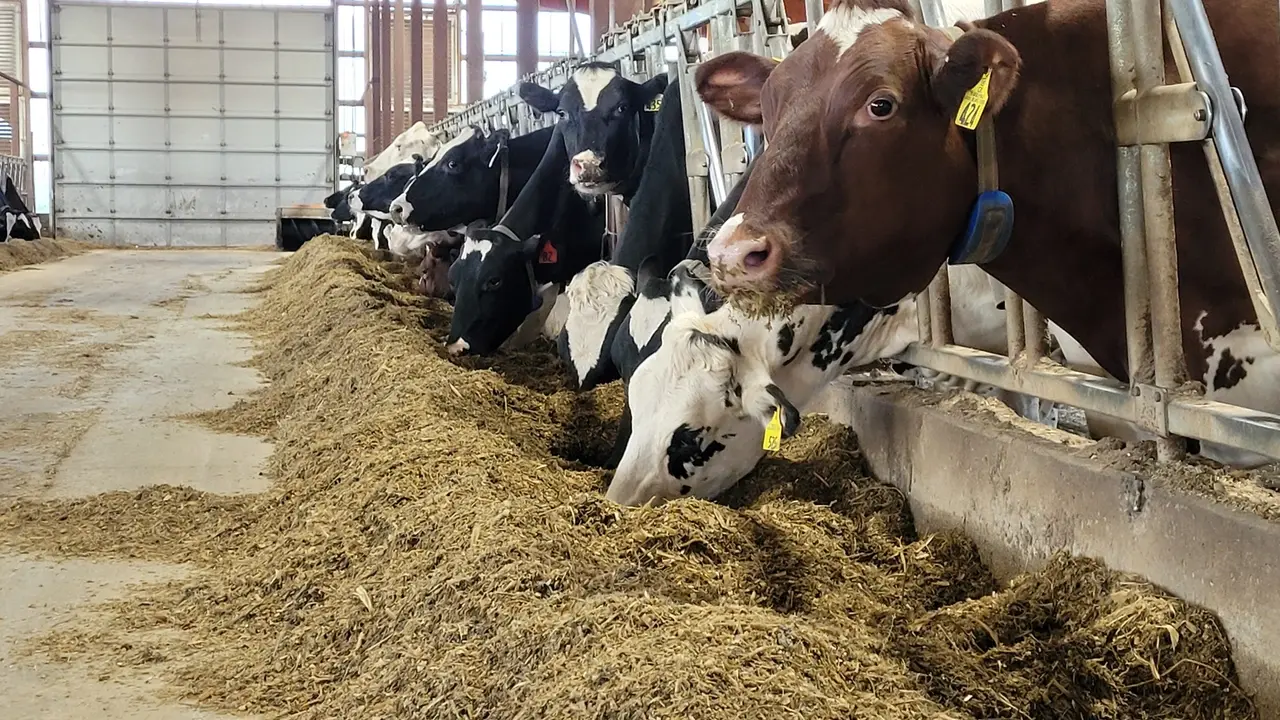Chief Economist Krista Swanson with the National Corn Growers Association says a new study shows...
U.S. Dairy Back in the Driver’s Seat

The dairy industry has entered one of the most unique market moments in a generation, according to Corey Geiger, lead dairy economist for CoBank.
“Feed prices are shifting to a five-year low, and beef-on-dairy calves are fetching top-of-the-market prices,” Geiger explains. “Those record values on calves are placing a lid on dairy replacement numbers, and that, in turn, has capped milk production.”
Dairy demand on rise
This is all taking place as dairy product demand is growing both domestically and internationally, Geiger says. In addition, there is long-term optimism that dairy will continue to be a growth category, as over $7 billion of new dairy plant investment is expected in the U.S. through 2026.
“Overall, 2024 should go in the books as a top-three milk price year,” he says. “During the fourth quarter of 2024, dairy farmers may even realize the best margins in a decade, once this fall’s grain crop reaches the bin.”
As for the near term, income over feed costs for June was the highest in two years at $11.65 per cwt. As a result, no indemnity payments were made via the Dairy Margin Coverage (DMC) insurance program, making June the fourth straight month for no payments. By way of comparison, the DMC program made insurance payments in 11 of 12 months during 2023. Coming back to this year, milk price and feed cost forecasts for the remainder of 2024 predict that margins will remain above the insurance threshold, according to Geiger.
Replacement heifer prices continue to soar. USDA’s reported price in July was 11.3% above April at $2,360 per head, with Wisconsin the highest price at $2,650 per head among the major dairy states.
“Only a year ago, the average cost of a replacement heifer was $1,760 per head nationally,” Geiger says. “This is a dynamic and fluid market situation, as multiple auctions across the country are now reporting sales above $3,000 per head for replacements.”
U.S. processing capacity to jump
Amid these bearish replacement numbers that could limit the ability to produce more milk, there is $7 billion of new dairy processing capacity slated to come on line in the U.S. through 2026, according to Geiger. “Since that $7 billion figure was calculated earlier this year, two more dairy processers announced plans to invest in their operations.”
Grande Cheese plans to renovate and expand its Chilton, Wisconsin, cheese plant by quadrupling the size to 80,000 square feet. This plant, which could become Grande’s third-largest plant out of eight Wisconsin facilities, primarily will produce mozzarella cheese for the restaurant and food service industries. “It is expected to be completed in 2026,” Geiger says. “Out East, Upstate Niagara Cooperative announced a $150 million expansion of its cottage cheese and Greek yogurt facility in New York. Construction of the 250,000-square-foot addition is planned to begin in the fall of 2024.”
These are just two more examples indicating that both domestic and international dairy manufacturers remain bullish on U.S. dairy, especially when considering trends among the big three dairy product exporters: New Zealand, the European Union and the U.S.
“The world’s two-largest dairy product exporters — New Zealand and the EU — have experienced slower growth in milk production due to greater impacts from ESG, or environmental, social and governance issues, and impacts to mitigate climate change,” Geiger explains. “In Europe, this uncertainty about the future has stalled investments on dairy farms and in processing plants.”
Cheese exports growing
Also on the export front, the U.S. is growing its cheese exports. For the first time in our country’s history, the U.S. exported more than 100 million pounds of cheese per month in March, April and May.
“In June, cheese exports cooled a bit, dropping to 85.5 million pounds,” Geiger says. “While that total was down 19.1% from May 2024, this June’s total was up 9% on a volume basis and 3% on a dollar basis.”
Given that more than half of the year is in the books and the U.S. has exported 582.7 million pounds of cheese, there’s a strong chance this could become the first year that the U.S. exports over 1 billion pounds of cheese, Geiger says.
“On the long-term horizon, growing cheese exports is a must, given the new processing capacity in which American-style cheese leads the way,” he explains. “So far, that market dynamic appears to be taking place, as 1 in 10 pounds of cheese from new processing facilities was exported prior to 2019. That number leapt to 1 in 4 pounds of cheese from new processing facilities being exported since that time.”
While geopolitical tensions and a strong U.S. dollar are headwinds for dairy exports, Geiger says, the overall trajectory is for growth in U.S. dairy product exports.
EDITOR’S TAKE:
A very upbeat and encouraging report on the U.S. dairy industry. It appears that the dairy economy has taken a very positive turn and could be in excellent shape by the end of 2024. It seems like the perfect storm with demand rising both domestically and internationally, herd values are improving and feed costs will be the lowest in recent memory. All this will provide some well-deserved income for dairy producers. Now is the time to reach out to dairy farmers in your area, maybe invite them in for a pre-harvest service special. It appears they may need to lower their tax burden by the end of this year and purchasing a new truck or two might be a great way to do it!








